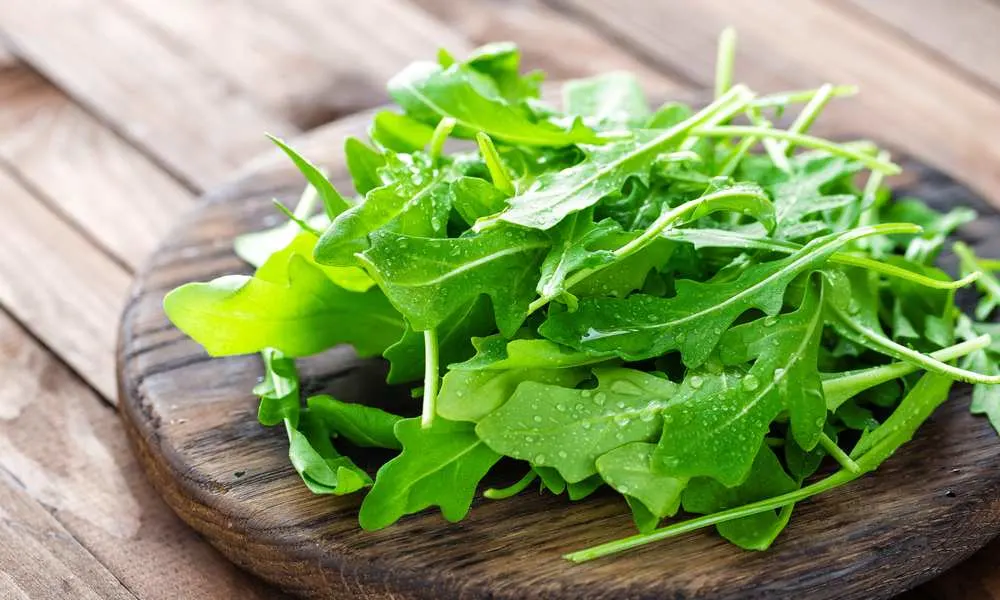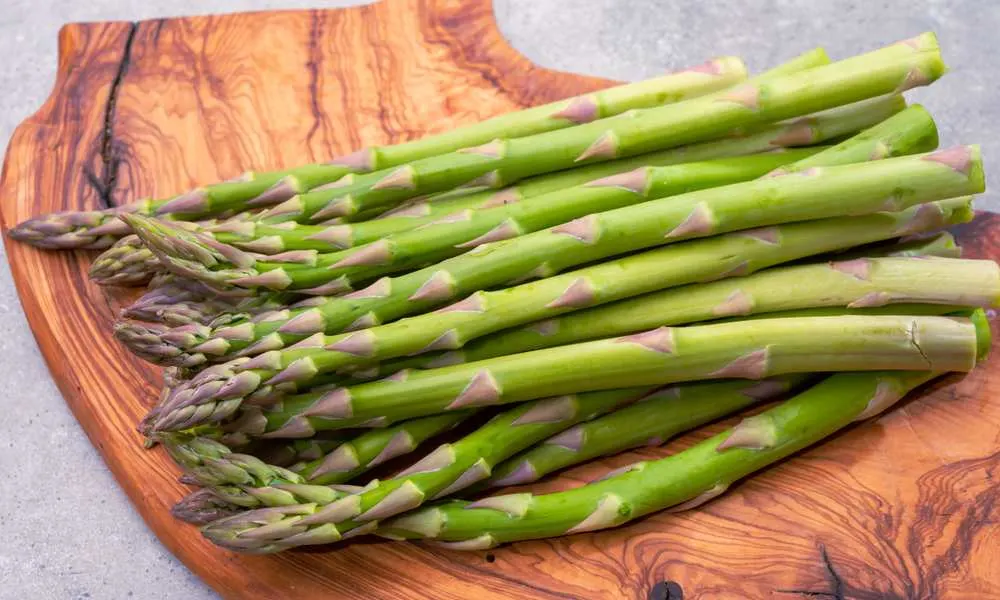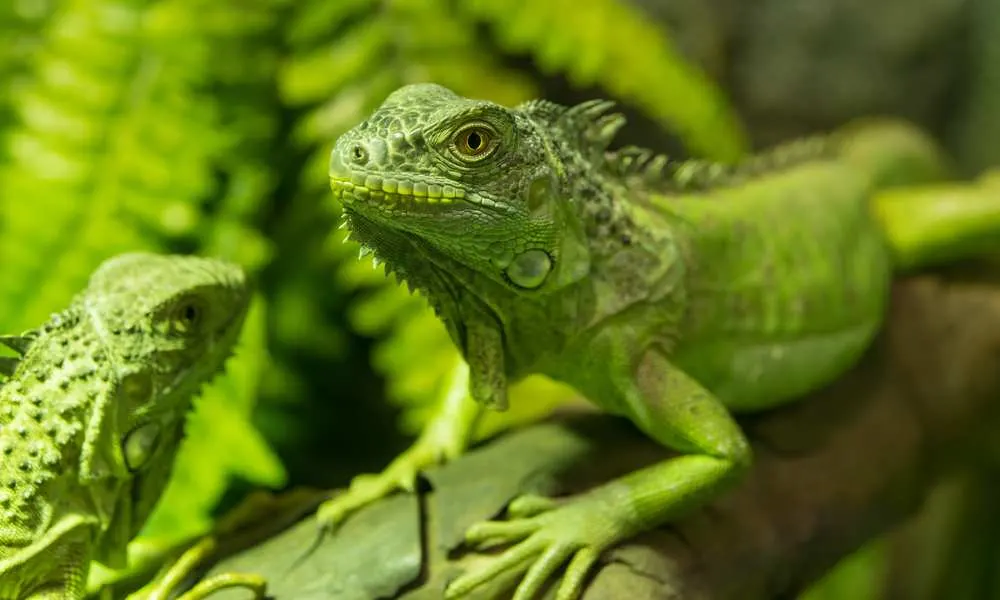It is generally known that 80% of the diet of any lizard is greens. The question is, which greens bring the biggest health bonus? Is arugula one of them?
According to the diet plan, greens should have an advantage in the diet of your bearded dragon. However, some of them are not healthy, regardless of the fact that they fall into that category. Today we will touch on one specific plant – arugula – and the question that follows:
Can bearded dragons eat arugula?
Yes, but only on certain terms. Don’t worry; you’ll get all the answers you need. You just need to keep scrolling, and you will find out everything about feeding your bearded pet dragon some arugula.

Going Green With Arugula
Going green is always a good idea. But are all greens good? That is the question.
Here we have some arugula. A vegetable that is in connection with kale, broccoli, and cabbage – all of which we know to be healthy ingredients.
That said, arugula must be healthy as well. Don’t get me wrong – this is a nutritious treat. But if this is an ingredient in your pets’ diet, there are some things you need to pay attention to.
There are two versions of this veggie – there’s a “wild arugula” and “baby arugula.” You can guess which one can be dangerous to your pet. We’ll get to that in a minute.
Arugula has multiple uses: in salads, omelets, smoothies, and as pet food.
Let’s see what makes this vegetable so nutritious.
| Calories | 2.5 |
| Fat | 0.1 gr |
| Sodium | 2.7 mg |
| Carbs | 0.4 g |
| Fibers | 0.2 gr |
| Sugar | 0.2 gr |
| Protein | 0.3 gr |
You should only include “baby arugula” in your bearded dragon’s diet. It’s less savory and spicy. Baby arugula, or regular arugula, is widely harvested, and you can find it in almost any grocery shop and farmer’s market.
“Wild arugula” has darker green leaves, and it has a spicy taste to it. This makes it harder for animals to digest it.
Arugula is also rich in vitamins and natural minerals like:
- Calcium: helps blood cells clot
- Potassium: maintaining nerve function, muscle contraction, and regulating blood pressure
- Folate: producing DNA material
- Vitamin C: the key in supporting the immune system
- Vitamin K: helps maintain regular blood coagulation
- Vitamin A: a powerful antioxidant that protects the immune system
Consuming arugula can decrease the risk of cancerogenic cells developing. This is because it doesn’t require cooking, so it doesn’t lose its natural composition.
This leafy green also lowers the risk of animal diabetes and heart diseases. Its low glucose levels can protect your pet from these terrible chronic diseases.
One thing arugula is highly praised for, especially in animal diets, is its ability to boost your bearded dragon’s bone health. This is thanks to its high calcium levels.
Arugula is filled with water, and this is great for keeping your pet hydrated.
You will hear animal experts encouraging you to feed your pet bearded dragon arugula after it has come out of its brumation period. They have a point. Your beardie might come out a bit fatter and lack some essential vitamins. That’s where arugula comes in!
Chlorophyllin in arugula kills the unpleasant body odor. So, while you’re feeding your bearded dragon or taking him out of his “nest,” you won’t have to deal with that strong scent most reptiles have.
Another great thing about this vegetable is that it can act as a natural cure. If your pet has been on a bad diet and has ingested some strong toxins – arugula can help you with its strong detoxification powers.
It’s also a natural cure for inflammation – its antioxidants act as a natural defense mechanism against toxic ingredients.
As you can see, it’s good for almost everything, but you still need to be cautious when consuming.
When we said that your pet could eat arugula only on specific terms, we meant for a limited time period. You should feed your bearded dragon twice a month – and that’s it!
Arugula can be too strong for your bearded dragon to digest. Another fear of improper digestion comes from the way arugula is served.
Here’s how to make arugula safe for eating:
- Select the tender leaves of arugula. (don’t choose those that are too crunchy)
- Wash the arugula thoroughly, getting rid of all the dirt on it.
- Take the leaves and cut them into smaller sizes so that your pet doesn’t choke on the long ones.
- You can choose the option of mixing arugula with the “main” diet or serving it with a couple of other veggies.
Once you’ve got this covered, your pet is ready to enjoy some fresh and healthy greens.
Can you grow arugula in your garden? Certainly, and here are some bonus tips:
- Start growing arugula sometime during spring.
- Arugula grows quickly and easily in containers, in-ground gardens, and raised beds.
- Plant arugula seeds 12 inches apart at a sunny location and in well-drained soil.
- Before you plant the seed, make sure that you mix the soil well.
- Keep the arugula hydrated at all times.
- Include some continuous-release plant food while the seed is growing.
- Use pine needles or dry grass clippings to preserve moisture.
- Pull out the plant when the flavor becomes intense.
Note: Animals can have an allergic reaction to arugula.
Food allergies are the immune system overreacting to the food’s nutrients – proteins, sugars, carbs.
The signs of food allergies vary from mild skin irritation to severe inflammation. However, one thing is sure – you need to get your pet tested for allergies.
If you don’t do that in time, complications may arise, and it can gravely affect your pet’s lungs. The worst-case scenario would be for your animal to experience a collapse in the circulatory system followed by a shock and a drop in blood pressure.

How About Asparagus?
Asparagus is another veggie that is good for your bearded dragon.
The eating schedule is almost the same as for arugula – you should serve this veggie to your bearded dragon every two weeks.
Suppose your pet is not a fan of a stronger-flavored diet; you should include this veggie every two weeks. On the other hand, if your bearded dragon seems to enjoy a strong nutrient more often, you can make a weekly habit out of this.
It would be best if you didn’t make this a daily meal because asparagus is high in phosphorus and a little low in calcium. This poses a problem for your pet because it needs calcium for bone health, and phosphorus can slow down the progress of the vitamin.
Nevertheless, asparagus offers other benefits, like:
- Antioxidants that protect your bearded dragon’s immune system
- Fibers that regulate the digestive system
- Vitamin E prevents inflammation
- Vitamin K regulates blood clotting
- Folate that promotes tissue growth.
The most crucial feature of asparagus is its protein content that keeps your reptile strong.
Of course, when feeding this to your pet, you need to cut it into pieces that are not too big or too small.
You’re in luck, your bearded dragon can consume both raw and cooked, but it’s wiser to go with raw asparagus.
A cooked version includes boiled and steamed asparagus. Here’s how to pull this off.
With boiled asparagus, you need to:
- Pour salt and water into a cooking pot
- Add asparagus to boiling water and stir
- Cook for 3 minutes – until the color is bright green
- Wait a couple of minutes to cool off
Preparing steamed asparagus goes like this:
- Put the asparagus in the steam basket and cover it
- Cook on high heat for about 4 minutes
- After finishing, run it through cold water and serve

Other Healthy Greens
Sure, arugula and asparagus are great for your beardie, but they are certainly not the only ones on the list. They can also eat:
Collard greens are good for bearded dragons because they contain the necessary amount of calcium and fiber, along with some vitamins like A, K, and C. Unlike asparagus and arugula, collard greens can become a daily meal for your bearded dragon.
Of course, this doesn’t mean that this should now turn into the only ingredient on their diet. Mix it up a bit.
Serving this leafy green is easy; you just need to wash them well and chop them into smaller pieces so that your pet can chew them properly. It would be best if you opted for the organic ones – 100% natural.
Your beardie will devour this ingredient, and here’s a video that proves that statement:
The next one on the list is a member of the lettuce family – bok choy.
And yes, your bearded dragon can and should eat this veggie, but it should be consumed moderately. Even though this is highly nutritious, you shouldn’t go overboard.
The correct feeding ratio for this veggie would be 2 to 3 leaves once a week. It would be best if you served this raw and not cooked – to preserve its nutritional value as much as you can.
Some of the benefits these leafy green carries are high calcium levels, vitamins A and C that support the immune system, etc.
There are just one thing you need to watch out for – goitrogens.
Bok choy contains a certain amount of goitrogens that, if not consumed moderately, can cause troubles with thyroid glands.
You could also give your bearded dragon some kale.
Although some people claim that feeding kale can be detrimental for your dragon because it contains oxalates, it’s perfectly safe to include this in their diverse diet.
Oxalates are actually present in many greens, and they bind to calcium when absorbed, so there’s no real danger as long as you monitor the intake. Kale is also great in preventing obesity, tooth decay, and digestion problems. So, there’s no reason not to go for it.
Kale is best when served raw, chopped, and alongside some other veggies. Bon appetit to your beardie!
We’re left with basil, and what a fine choice it is!
Basil is undoubtedly healthy, but it’s not considered a staple food. It would be best if you learned to give it to your bearded dragon in smaller portions.
One other thing. While bearded dragons will happily munch on some freshly chopped basil, dried basil is out of the question.
Dried food is much, much stronger, and this can sometimes be too much for your beardie’s stomach. So, the best solution would be to keep your basil fresh, organic, and moderate.
When it comes to feeding baby bearded dragons, it’s not so wise to feed them this. Young bearded dragons need insects as their primary nutrient – leafy greens should come after they grow up.

